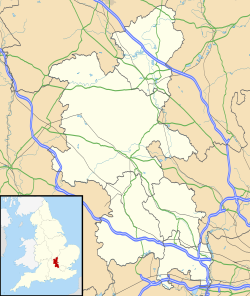| Chearsley | |
|---|---|
Location within Buckinghamshire | |
| Population | 539 (2011 Census) [1] |
| OS grid reference | SP715105 |
| Civil parish |
|
| Unitary authority | |
| Ceremonial county | |
| Region | |
| Country | England |
| Sovereign state | United Kingdom |
| Post town | Aylesbury |
| Postcode district | HP18 |
| Dialling code | 01844 |
| Police | Thames Valley |
| Fire | Buckinghamshire |
| Ambulance | South Central |
| UK Parliament | |
Chearsley is a village and civil parish within the Buckinghamshire district in the ceremonial county of Buckinghamshire, England. It is situated about seven miles south west of Aylesbury, and about four miles north of Thame, in Oxfordshire.





